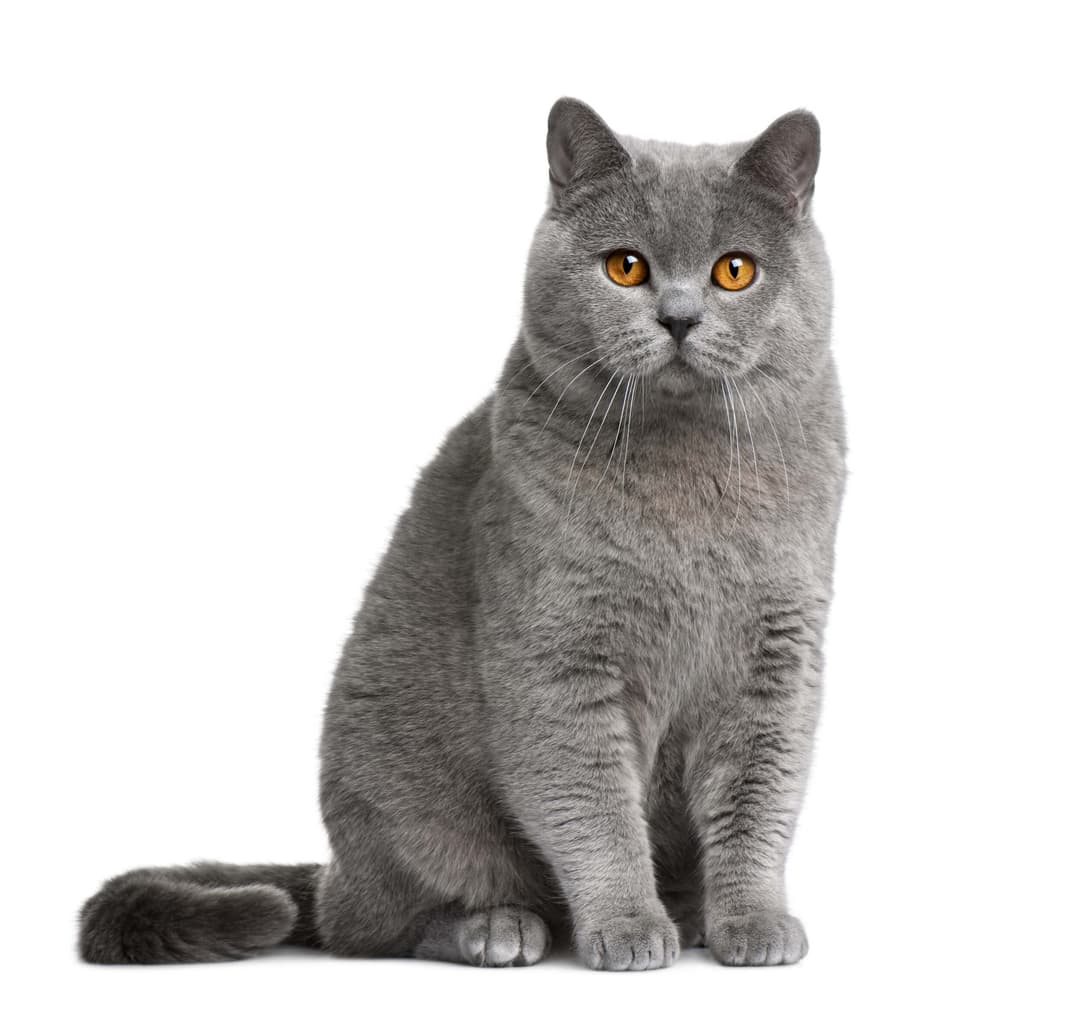Discover your cat's connection to this breed and 20 others



Discover your cat's connection to this breed and 20 others


British Shorthairs make great family pets due to their loyal and devoted nature. They love to snuggle and spend time with their humans, and though they can be a bit shy with new people, they are quick to show their affection once they get to know you!
The British Shorthair is a version of the traditional British domestic cat. They are big, solid cats with chunky bodies, strong legs, broad heads, and large piercing eyes. The most common coat color seen in this breed is the "British Blue", though the breed includes a wide range of coat colors and patterns that complement their rich, dense coats.
The British Shorthair is considered one of the oldest cat breeds. It was first introduced to Great Britain (now the United Kingdom) by the Romans and is thought to share common ancestry with native wild cats of Britain. Food shortages during World Wars I and II brought the breed close to extinction. To increase their numbers and promote genetic diversity, breeders began outcrossing them with Persians, Russian Blues, and Burmese.
This dignified breed is famous for its easygoing and patient nature. While very affectionate, British Shorthairs aren’t known as lap cats and do not tend to enjoy being picked up or carried around. The British Shorthair is sweet-natured and can make a great companion for anyone seeking a low-maintenance cat.
Recent studies suggest that the British Shorthair is genetically predisposed to various inherited diseases such as polycystic kidney disease, which is a condition characterized by renal cysts that can lead to kidney failure. They are also known to be at a higher risk for hypertrophic cardiomyopathy (HCM), the most common form of feline heart disease. In a 2011 Danish study of more than 329 British Shorthairs, 20.4 percent of males and 2.1 percent of females had HCM. The breed is also prone to obesity, so it is important to ensure a proper diet and promote regular activity.
The feline star of the hit TV series “Outlander”. If you’re a fan of this well-known story of love and time travel, you’ll know that Jamie Fraser gives his beloved wife Claire a British Shorthair kitten named “Adso”.
The beloved cat of "The father of Cat Fancy". This breed was showcased in the very first cat show organized by Harrison Weir in 1871. The show also included Persians and Siamese cats, but, supposedly, Weir preferred his country's native breed. "My first love will always be for the short-haired domestic cat", he wrote in his 1889 book, ``Our Cats and All About Them”.
The inspiration for Alice’s infamous Cheshire Cat. Some historians think that Lewis Carroll's Cheshire cat in Alice in Wonderland was inspired by a tabby British Shorthair.
They can get a bit chubby. Although naturally large, British Shorthairs have a tendency toward obesity, especially as they age. It’s important to keep these kitties active and feed them an appropriate diet.
A British Shorthair once held a record for the world's loudest purr. In 2011, the purr of a cat named Smokey was measured at 67.7 decibels, which is reported to be as noisy as a lawnmower. Sadly, Smokey died in 2014, but he held his record until 2015. In 2015, a cat named Merlin broke his record with a 67.8 decibel purr!
Recommended by top vets with decades of experience
21 breeds
64 genetic health markers
50 genetic trait markers
